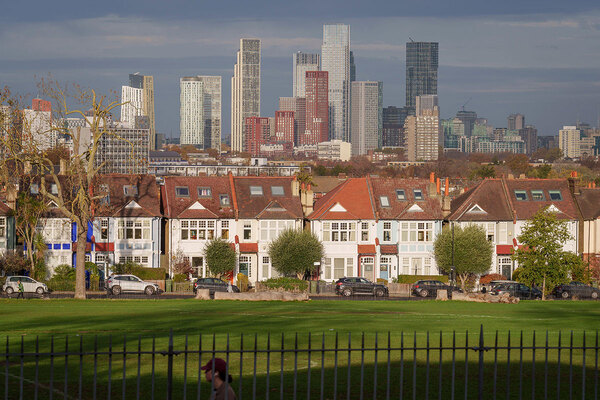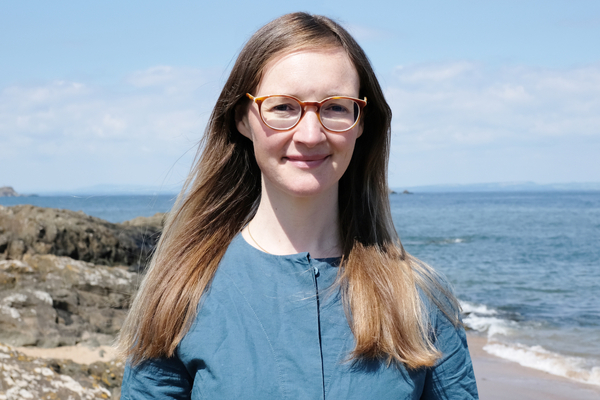Seeing what's in front of us for a model future
Setting goals to achieve net zero can sometimes feel quite ethereal.
So, we let ourselves get drawn into achieving a goal set by Government policy, that even when set into law, isn’t always acted upon by the law makers themselves.
So, maybe we need to take a step back and see what’s right in front of us.
Climate change is here and we see it every day with more frequent and more extreme weather events. We know it is impacting on people and property, but we don’t quite know what to do about it. In a property management setting, having a strategy to get to net zero may fulfil a future legal obligation, but it won’t solve the problems that climate change is causing now, and will continue to cause, into the future.
In a social housing setting, we talk a lot about ‘Strategic Asset Management’ and how our 30 year investment plans look to optimise asset lifecycles and maximise value for money. In recent years, we have had to question ourselves about the decency of the homes we provide. We’re juggling with the challenges of improving the warmth of our customers’ homes, improving decency and standards, whilst considering how we can fund the investment required to meet net zero for our homes by 2050.
At Livv Housing Group, we’re well on with our net zero carbon strategy, central to that is our commitment to bringing all our existing homes, up to EPC C by 2025, five years ahead of the Government’s target.
But at Livv we’ve taken an even more holistic view, what if we were missing part of the equation? The impact that climate change will have on our homes - even before we get them to net zero.
Cost benefit of early adaptations
Every five years, the Climate Change Committee publishes a UK-wide Climate Change Risk Assessment (CCRA). The third CCRA was published in 2022 and gives a stark reminder of the consequences of the changing climate we see around us every day.
The evidence indicates that the costs of climate change to the UK are high and increasing. With eight of the 61 climate risks estimated to exceed £1billion p.a. by 2050 (under a 2°C scenario temperature change). But this could be 15-20 of the risks if we assume a higher warming scenario, and with the United Nations Emissions Gap Report from 2023 putting us on track for a 2.5-2.9°C rise¹ - that is possible.
The risk assessment also includes a review of costs and benefits of adaptation policies. A conclusion is that many early adaptation investments are highly effective and deliver high value for money with benefit-cost ratios typically ranging from 2:1 to 10:1.
There is a strong case for acting now, not later and many early adaptation investments are highly effective and deliver high value for money - Climate Change Committee CCRA3
Climate modelling a property portfolio
If we are going to take practical steps in implementing a climate adaptation policy that will deliver value for money and ensure we provide healthy, safe homes for our customers, we need to understand the impact of climate change specific to our property portfolio.
Climate modelling data for localised areas is widely available and can look at different climate incidents, comparing current natural hazards to future climate change related hazards. The future hazards are assessed based on the climate modelling scenario² used and the time horizon for the assessment.
Consideration can then be given to the change in risk for each hazard, to evaluate mitigating actions that may be required to maintain the long term viability of the property or group of properties. It can also be used to inform future development decisions or design criteria for new properties.
We worked with our insurers Zurich Resilience Solutions to thus evaluate our social housing portfolio based in the North West of England, and used the intergovernmental panel on climate change standard ‘middle of the road’ scenario (SSP2-4.5).
For our geography, it showed a step-change in increased risk profile for wind and precipitation, with some change in flood hazard linked to the locality of waterways.
The most stark finding of the climate modelling data, however, is that the greatest increases in risk will materialise by 2030 (not e.g. longer term by 2050 or beyond!). The stark reality for the strategic asset management of our housing portfolio - climate change is already here.
Heat, health and wellbeing
The challenge in assessing the impacts of heat within climate modelling, is that the standardised metric for heat hazard is based on the number of days per year with maximum temperature >35°C. However, exposure to extended periods of high temperature below this measure can cause a range of direct and indirect health impacts in addition to discomfort.
Extended exposure to heat can also have material impacts on maternal health, neurological conditions, mental health and unintentional injury and accidents. There is a robust link between increases in the number of recorded daily deaths and high temperatures, particularly for those who are vulnerable, such as the elderly, with typically around 2,000 heat-related deaths occurring every year in the UK. These heat-related deaths occur both during heatwave periods and outside of them, with increases in death rates detectable from 21.7°C in the North West of England and from 24.7°C in London (i.e. lower than the thresholds to trigger heat-wave alerts)³
It is considered that under current weather conditions, half of UK homes suffer from overheating risk⁴ and around 90% of existing homes will overheat under a 2°C global warming scenario.
Urban Heat Island effect
The risk of overheating is also considerably higher in urban areas. This is due to the ‘urban heat island’ effect. Urban heat islands (UHIs) occur where areas experience higher temperatures than surrounding areas (in particular at night), as heat is retained by the built environment and additional waste heat is produced by activities such as industry and transport.
But the UHI effect can be reduced through careful planning and design of buildings and surrounding urban spaces, including the use of trees, woodlands, public greenspaces and water bodies. Increasing tree and vegetation cover can lower outdoor temperatures by providing shade and the subsequent cooling effect they produce.
We worked with Map Impact to develop our UHI modelling data across our property portfolio (generated by satellite imagery) to enable an evaluation of the risk of the UHI effect on our homes. When modelled across our property portfolio, we were able to identify a very high risk in a small range of properties, where mitigating actions can now be considered.
See what’s in front of us and act upon it now
So, let’s not forget why we need to make change happen and why we need to achieve net zero. Climate change is here and we need to act now. With the right insights harnessed, all property portfolio holders can have all the pieces of the jigsaw at hand to put into place. A jigsaw that brings into focus a truly climate modelled future, to ensure the right strategic asset management decisions are made to make a meaningful difference to provide net zero homes that really do work for all.
Tony Cahill is executive director of property at Livv Housing Group
Reference material:
¹ UN Environment Programme (UNEP) finds that current pledges under the Paris Agreement put the world on track for a 2.5-2.9°C temperature rise above pre-industrial levels this century.
² The intergovernmental panel on climate change uses a range of climate modelling scenarios, called shared socio economic pathways SSP1-5.
³ Climate Change Committee report on ‘Addressing overheating risk in existing UK homes’
⁴ The TM59 methodology from the Chartered Institute of Building Services Engineers (CIBSE, 2017)




